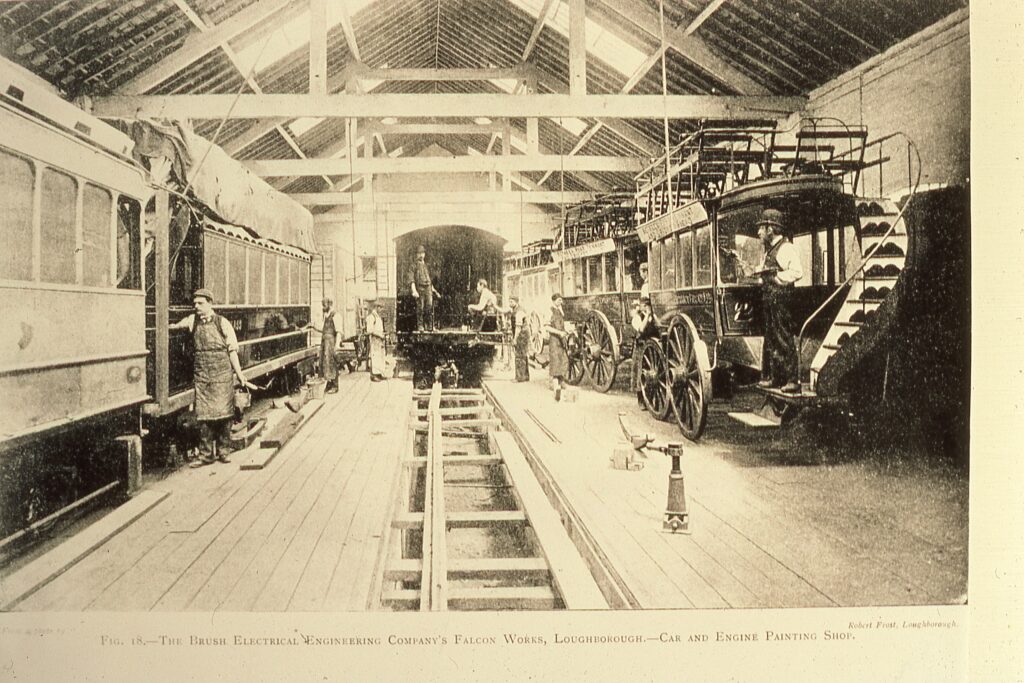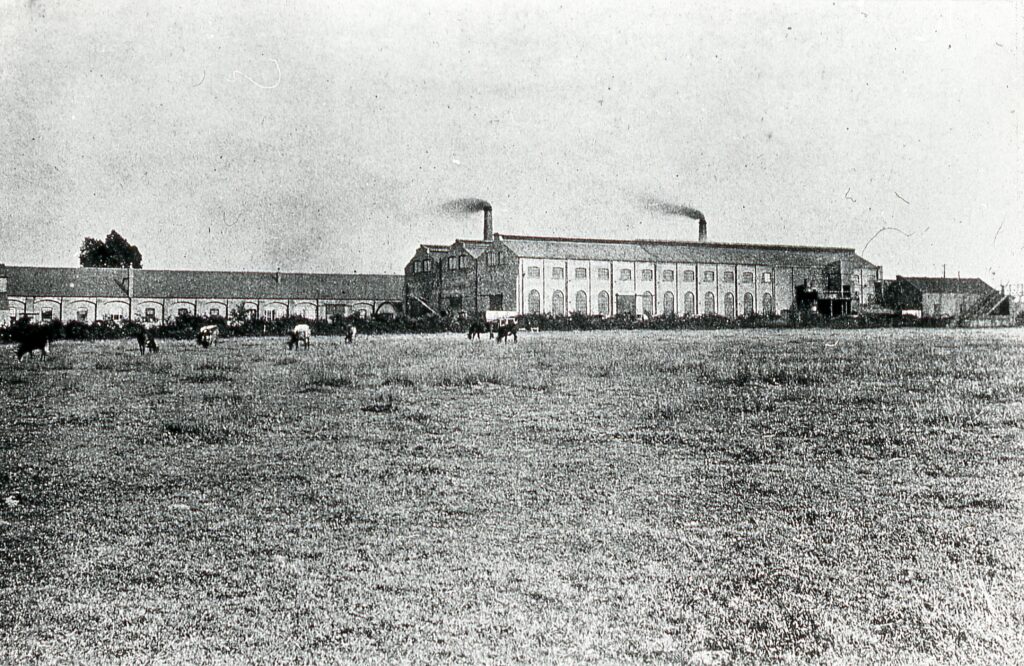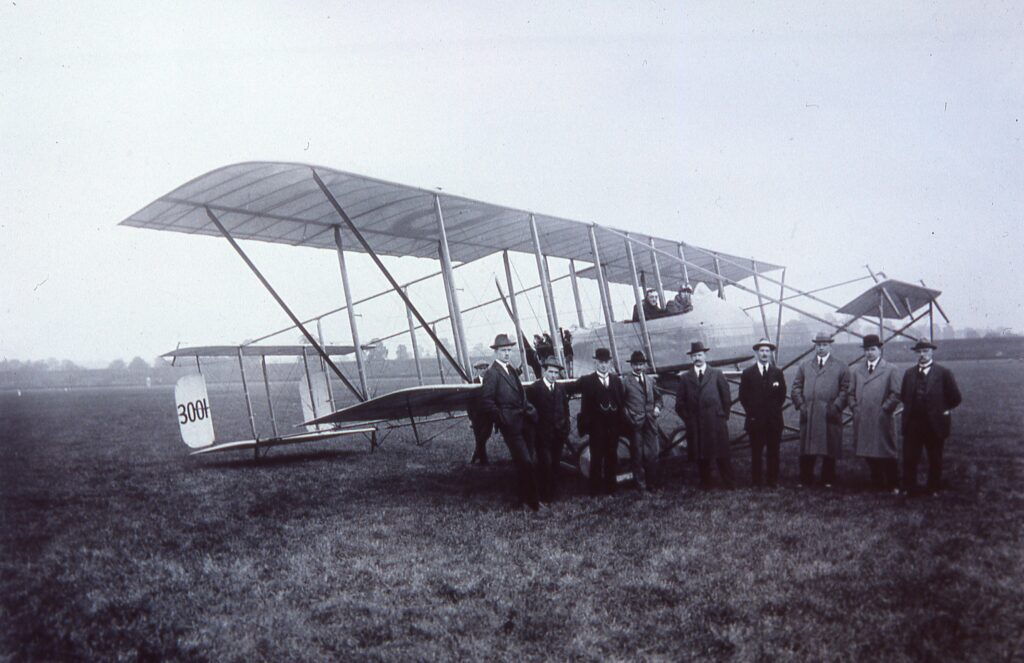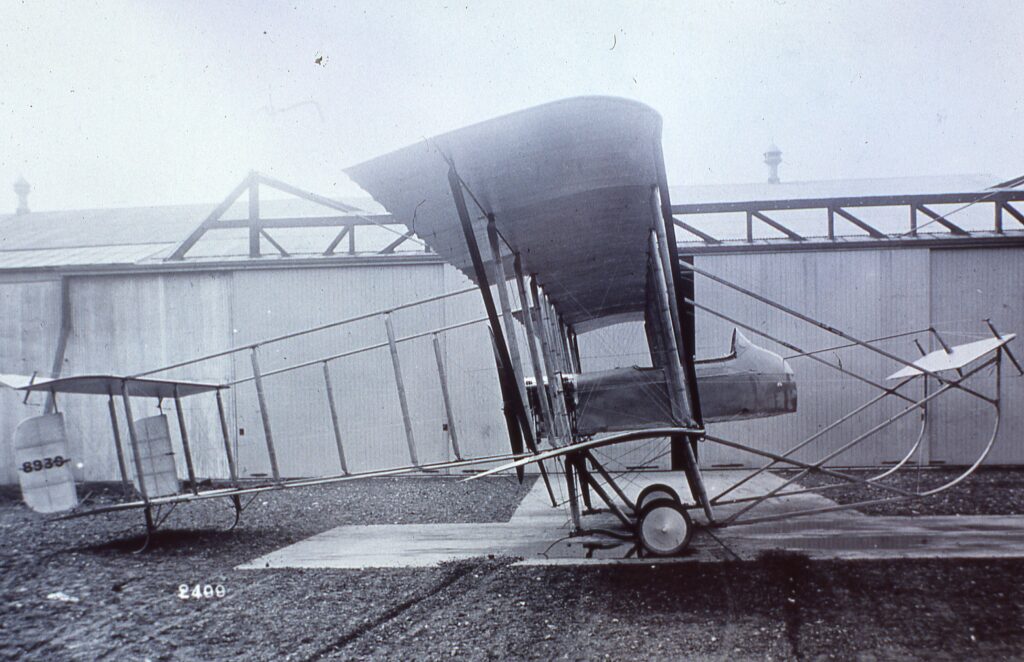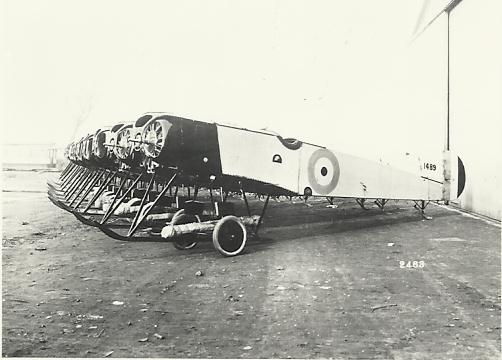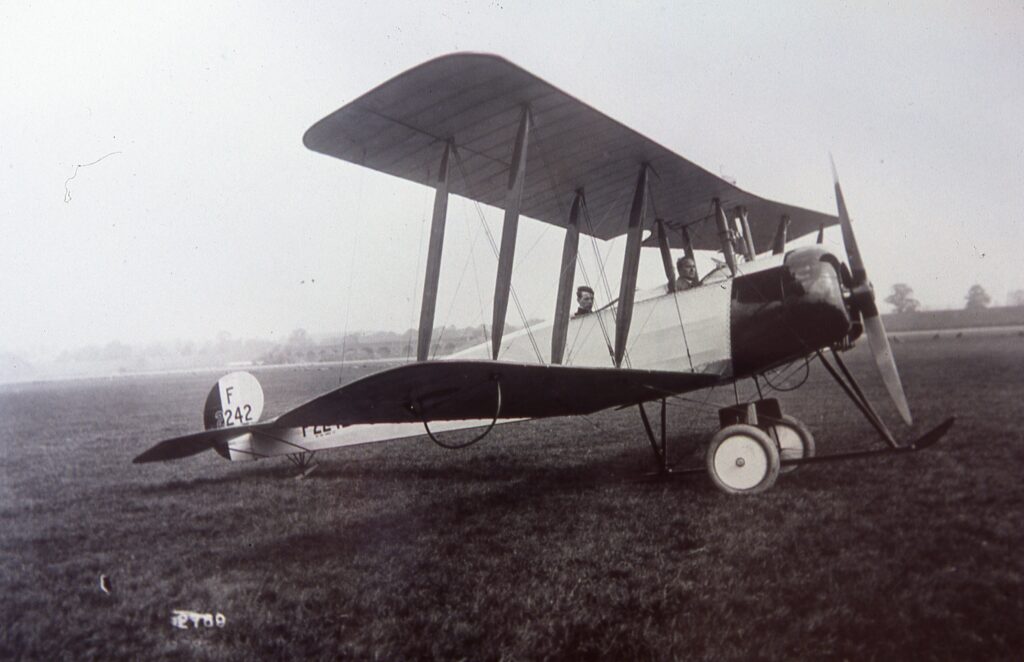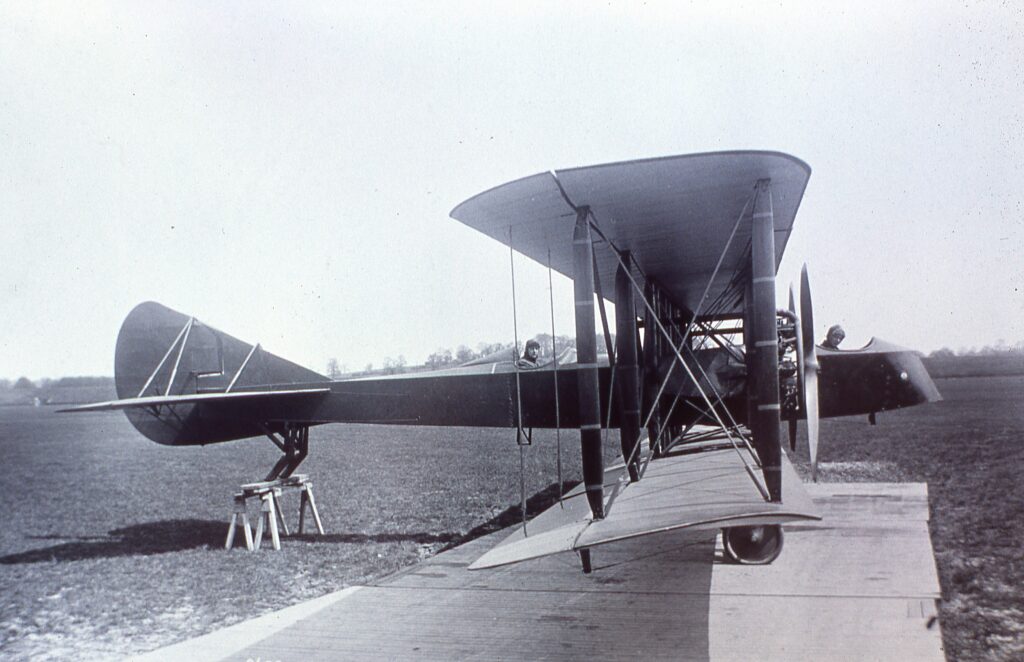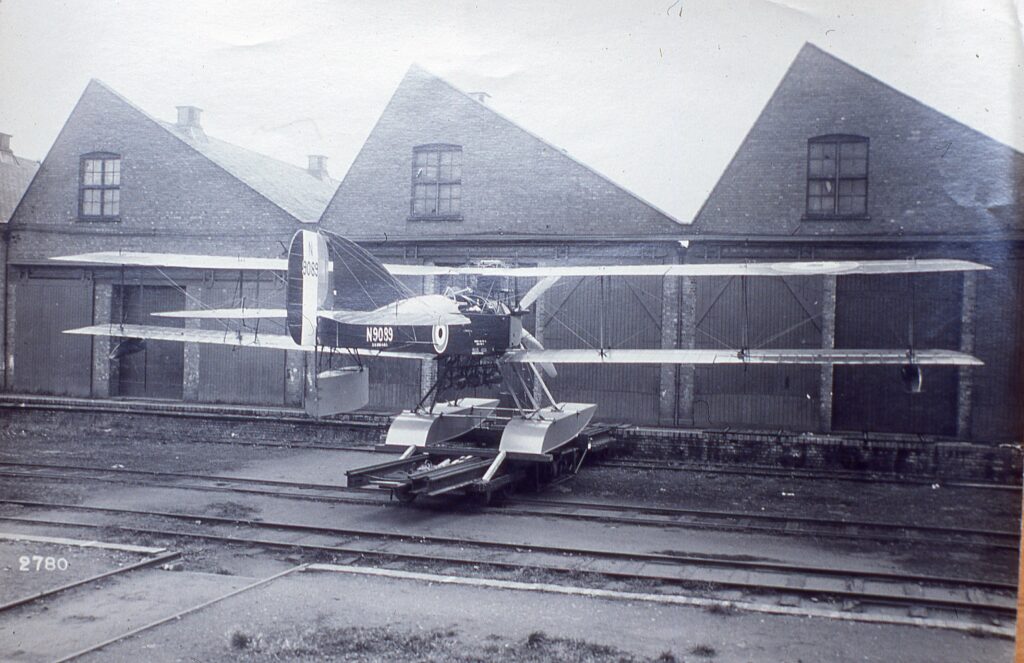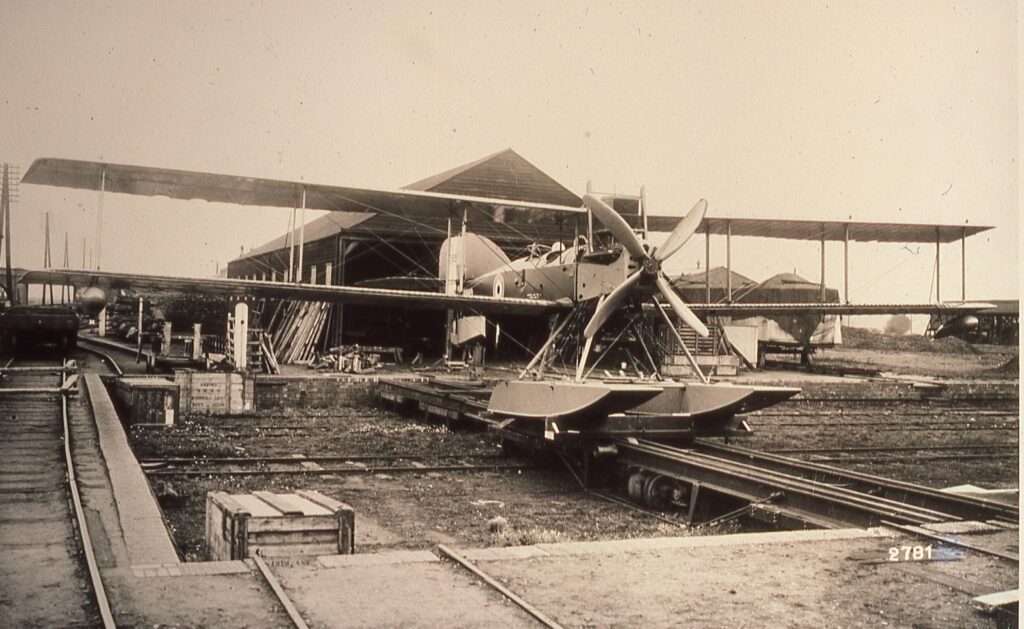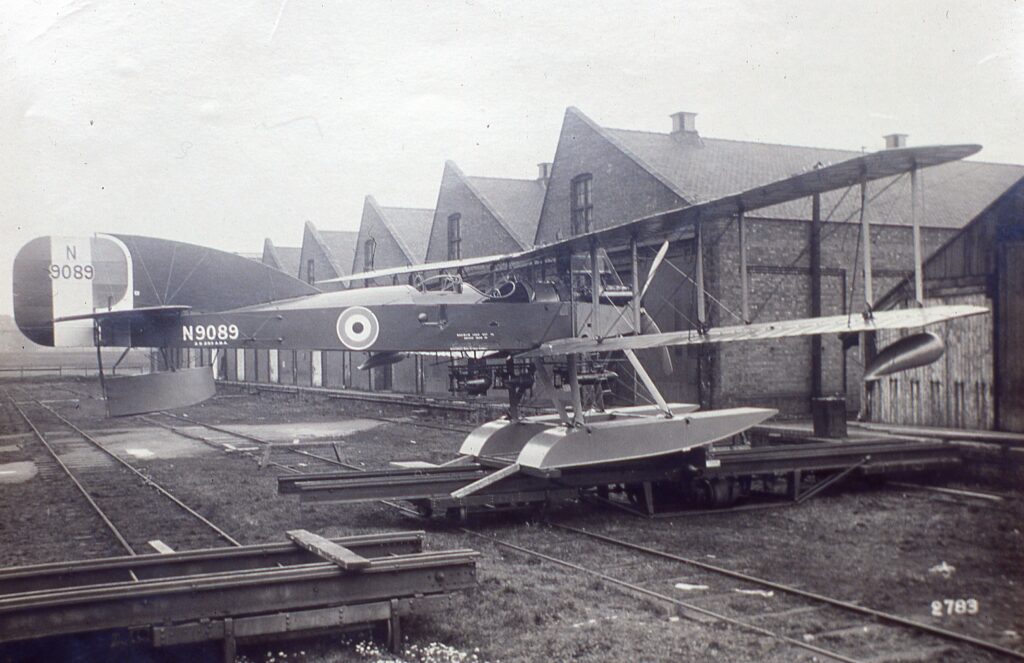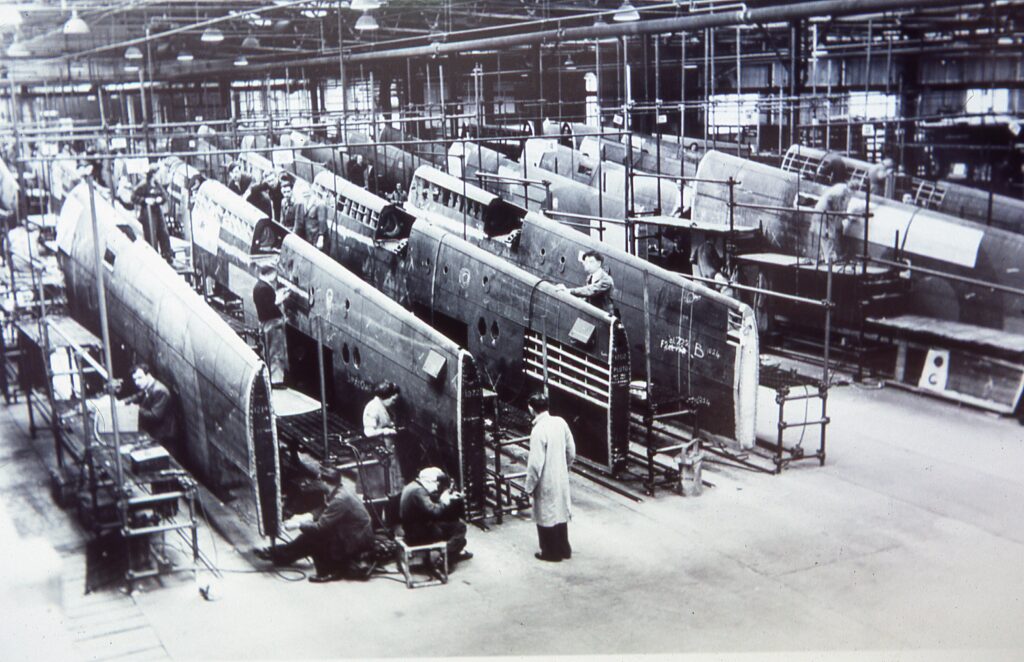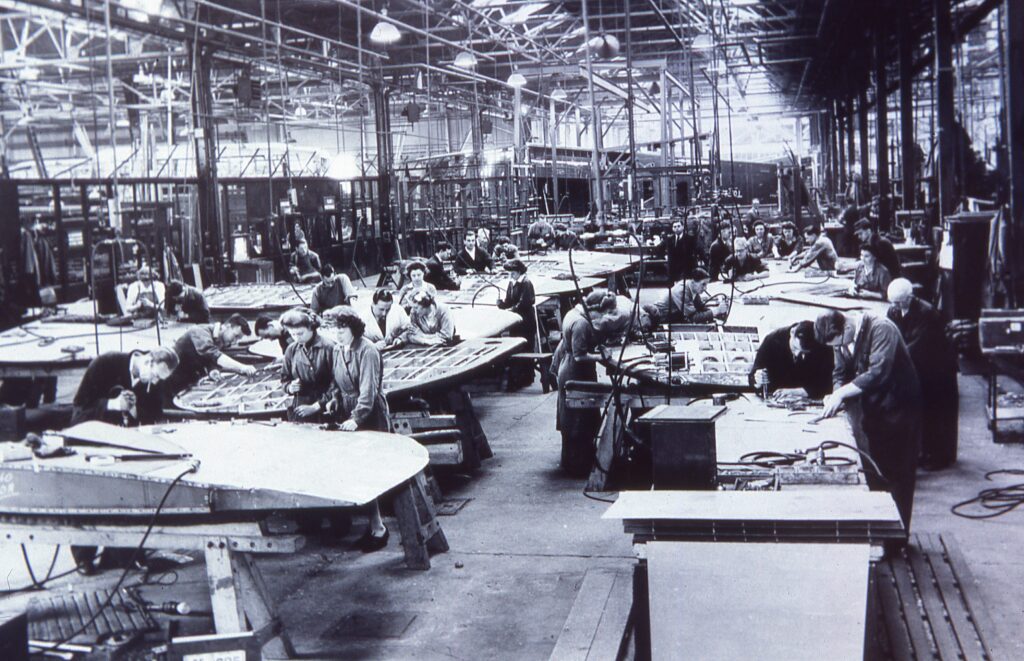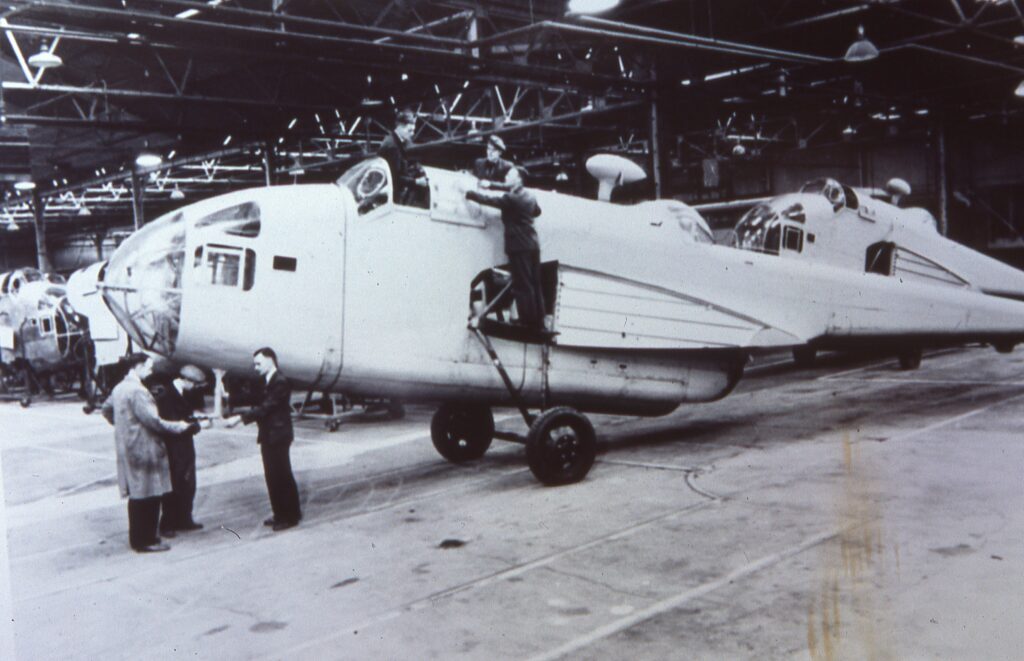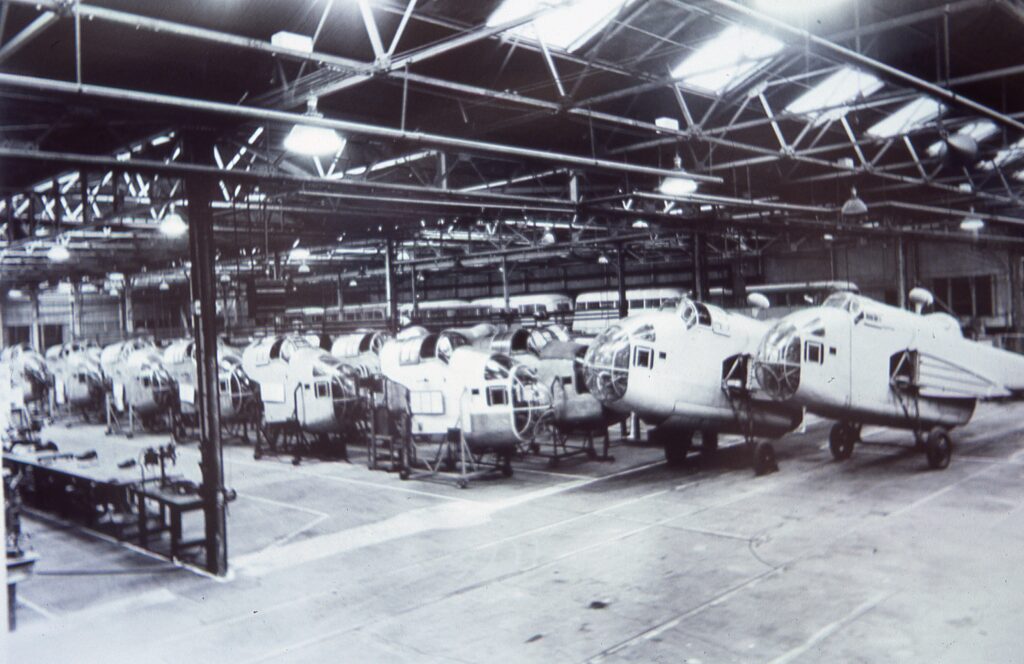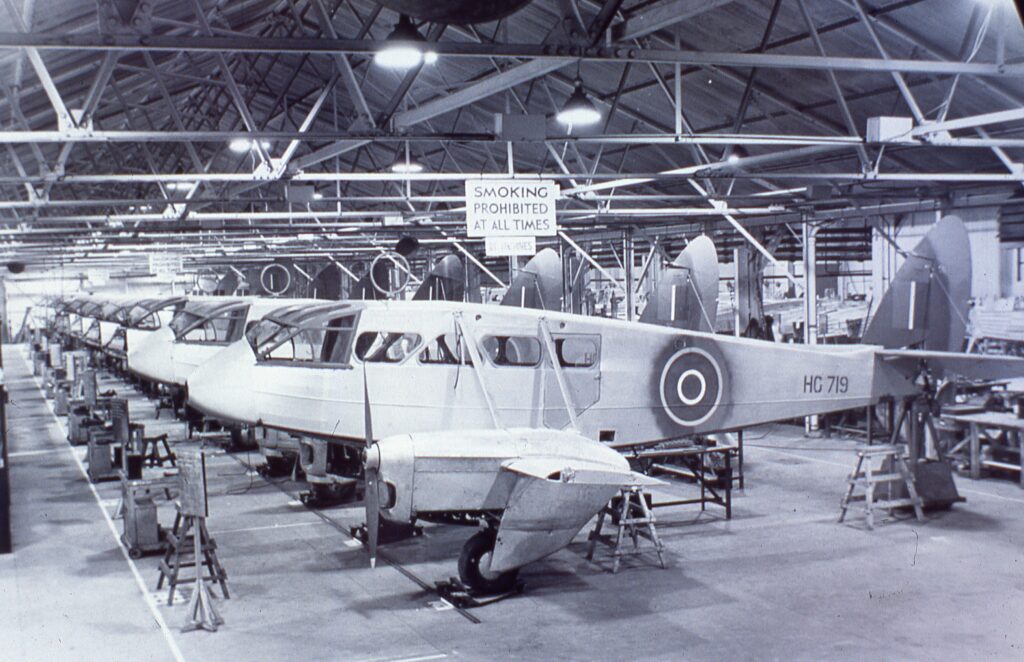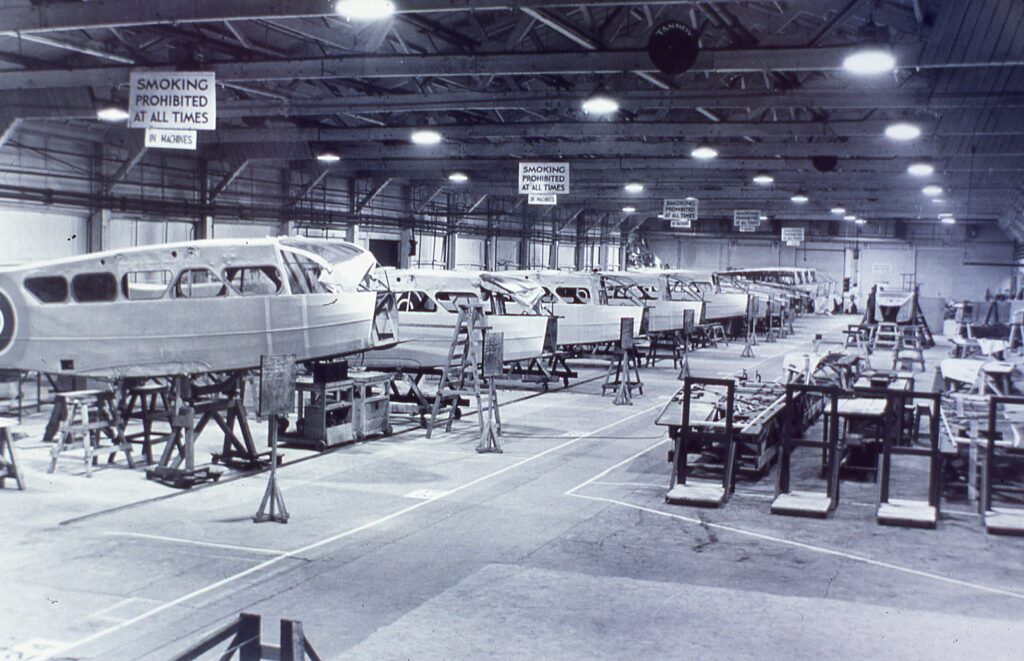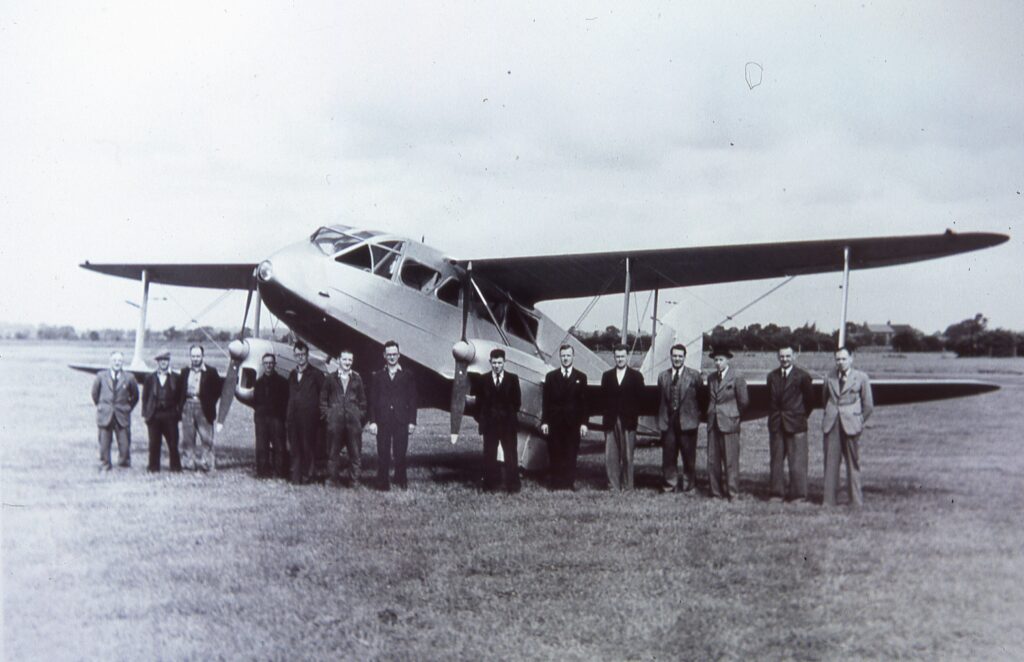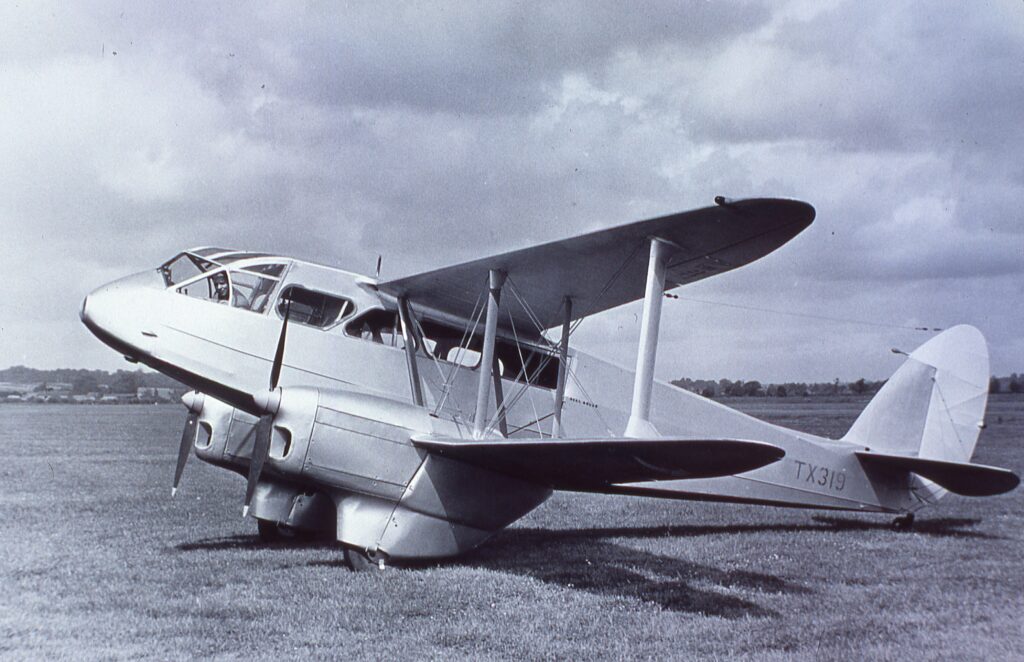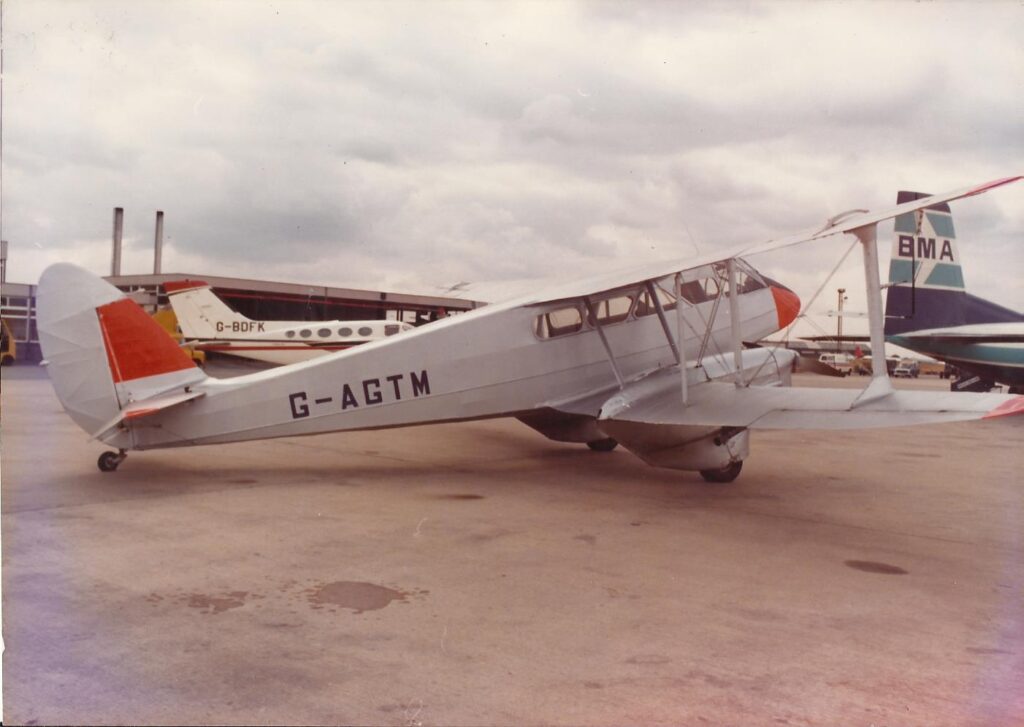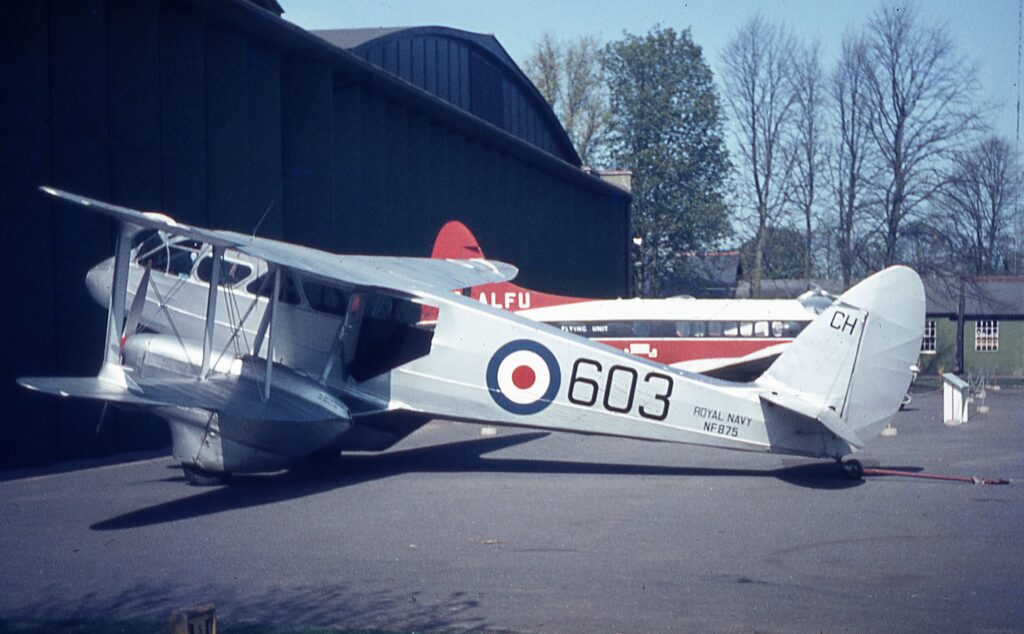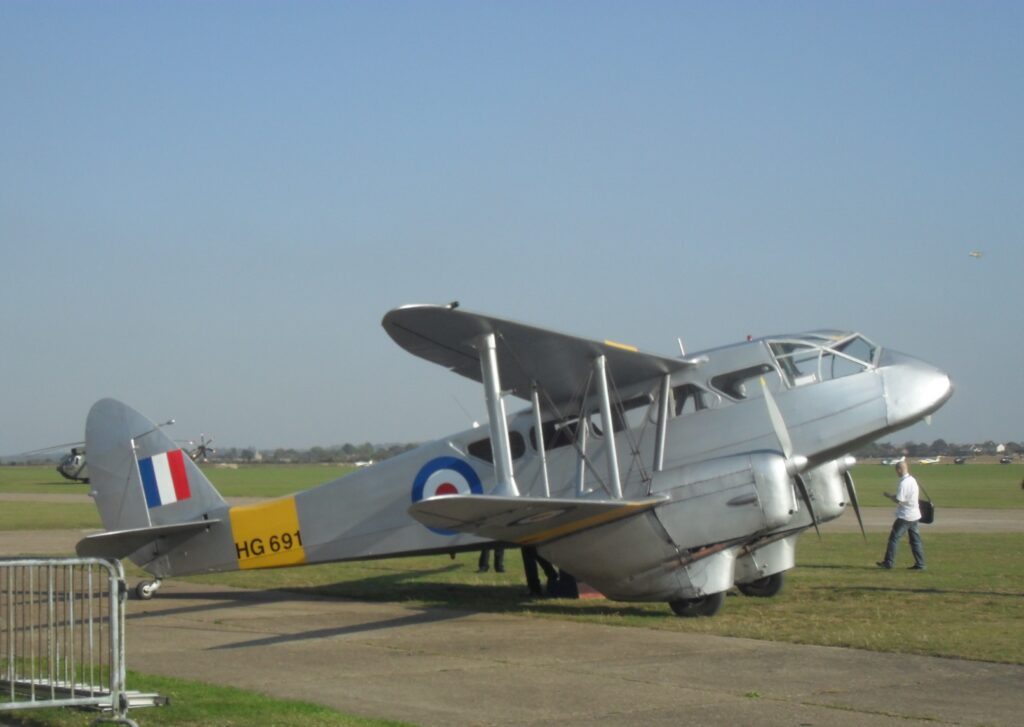Aircraft production at Brush
22 June 2020
My grandfather and my father, both who worked ‘at the Brush,’ often spoke of the products that had been built there over the years. Whilst I could relate to the rail products as they were still being produced, aircraft intrigued me.
There seemed to be little information available and memories had been lost or distorted over the years. A few records in the form of official photographs had survived and had found their way to Leicestershire Records Office, but these were without descriptions.
The research undertaken between 1976 and 1978 – with the help of fellow enthusiasts, aviation professionals and publishers – followed many routes and enough material was collected to publish a small book on the subject.
The following year was the official centenary of the Brush Electrical Engineering Company. I was working for one of its constituents – Brush Fusegear Ltd – and was selected as one of three local historians to research the company history for the celebrations.
See here for a precis of the research information accumulated from the book, centenary research and since.
Tony Jarram
Honorary Member of The Loughborough Library Local Studies Volunteers Group
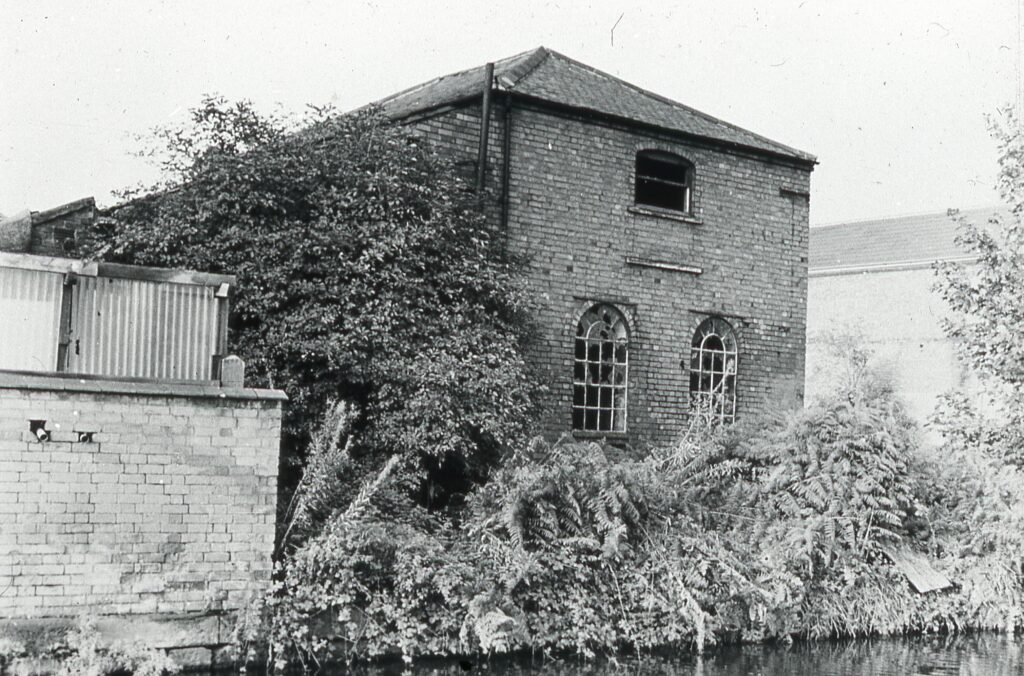
Site of or near to the original Falcon Works, photo taken in 1978. All buildings have since been demolished. (Brian Hope for the Brush Transport Enthusiast’s Club – Tony Jarram Collection) 
The coachwork paint shop at the Brush works pre-dating aircraft production. In this photograph the products are railway carriages and horse buses. (Brush official photograph/Leicestershire Records Office – Tony Jarram collection) 
The Falcon Works before the outbreak of World War One. Loughborough Meadows in the foreground were used as an airfield to despatch aircraft built at the works. (Brush official photograph/Leicestershire Records Office – Tony Jarram collection) 
The first Brush built aircraft was this Maurice Farman S.7 Longhorn (3001). It is seen here on Loughborough Meadows in 1916 prior to its delivery flight. Note the Great Central Railway in the background. (Brush official photograph/Leicestershire Records Office – Tony Jarram collection) 
A Farman Longhorn (8939) from the Brush second batch. Clearly visible are the out-riggers that gave the type its name. (Brush official photograph/Leicestershire Records Office – Tony Jarram collection) 
A line up of eight Avro 504C fuselages with 1489 nearest. The small emblem seen on the black engine cowling above the wheel contains the Brush Falcon.1489 was written off at Dunkirk in February 1917. (Brush official photograph/Leicestershire Records Office – Tony Jarram collection) 
Avro 504K two-seat trainer (F2242) is seen here on Loughborough Meadows prior to delivery to the Royal Flying Corps. The pilot is thought to be Teddy Barrs the Brush ferry pilot. (Brush official photograph/Leicestershire Records Office – Tony Jarram collection) 
The sole Henry Farman Astral bomber (9251) on Loughborough Meadows. The ‘top-secret’aircraft is devoid of serial and national identification, but Brush have still added their Falcon logo on the nose. The photograph was taken in March 1917. (Brush official photograph/Leicestershire Records Office – Tony Jarram collection) 
Short 184 seaplane N9089 on the tramcar traverser at the Brush works. This allowed movement between the assembly bays enabling a production line flow. The aircraft is fitted with a 260hp Sunbeam Maori III engine. (Brush official photograph/Leicestershire Records Office – Tony Jarram collection) 
Another view of Short 184 N9089 on the tramcar traverser at the Brush works. The seaplanes would be disassembled and crated for despatch by rail. The Meadow Lane road bridge can be seen in the left background. (Brush official photograph/Leicestershire Records Office – Tony Jarram collection) 
Short 184 N9089 part of the last batch to be built by Brush in 1918. Seen here on the tramcar traverser looking towards Loughborough Meadows. (Brush official photograph/Leicestershire Records Office – Tony Jarram collection) 
Avro Lancaster wing and fuel tank repair and fabrication in the Brush works during World War II. (Brush official photograph/Leicestershire Records Office – Tony Jarram collection) 
Another view of Lancaster wing and fuel tank repair and fabrication at the Brush works during World War II. Note to use of female labour. (Brush official photograph/Leicestershire Records Office – Tony Jarram collection) 
A Handley Page Hampden light bomber fuselage under repair at the Brush works in World War II. There is some speculation that this is P1355 the aircraft in which Sgt John Hannah won his Victoria Cross. P1355 was certainly one of the ones repaired at the Brush works. (Brush official photograph/Leicestershire Records Office – Tony Jarram collection) 
A general view of Handley Page Hampden fuselages under repair at the Brush works in World War II. (Brush official photograph/Leicestershire Records Office – Tony Jarram collection) 
De Havilland D.H.89 Dominie aircraft under construction at the Brush Falcon Works during World War II. The fuselage with inner wings and engines, as seen, would be towed tail first to a specially built assembly facility at Loughborough Derby Road Airfield where they would be fitted with their wings and completed prior to their air test and delivery flight. The nearest aircraft HG719 was delivered on 1st March 1944, via 18MU (Maintenance Unit), to the Staff College Flight at Bracknell. After service at White Waltham and Halton it was sold commercially to Walter Westoby and received the civil registration G-AKMH on 16th June 1948. It served with Westair Flying Services, Bees Flight Ltd, and Mr S.G. Newport before being sold to Zaire in 1964 probably as 9Q-CJK. (Brush official photograph/Leicestershire Records Office – Tony Jarram collection) 
Another view of the Dominie Assembly line at the Brush Falcon Works in 1944. (Brush official photograph/Leicestershire Records Office – Tony Jarram collection) 
The last Brush built aircraft D.H.89 Dominie TX319 at Loughborough Derby Road aerodrome on 2nd July 1946 prior to dispatch to De Havilland’s D.H. Whitney airfield. The aircraft was sold commercially to Peru. (Brush official photograph/Leicestershire Records Office – Tony Jarram collection) 
Another view of Brush built D.H.89 Dominie TX319 at Loughborough Derby Road aerodrome. (Brush official photograph/Leicestershire Records Office – Tony Jarram collection) 
De Havilland D.H.89 Dragon Rapide G-AGTM (built as a military Dominie. NF875, in May 1944) seen here at East Midlands Airport on 4th September 1978. Later in the day the aircraft gave a display over the Brush Electrical Machines Gala Day at the Nanpantan Road Sports Ground, Loughborough. The display was organised by the Brush Transport Enthusiast’s Club. (Brush Electrical Machines/Brush Transport Enthusiast’s Club – Tony Jarram Collection) 
Dragon Rapide G-AGTM, seen at Duxford, on 28th April 1984, in its former military Dominie livery as Royal Navy NF875 built at the Brush in 1944. (Tony Jarram) 
HG691 (G-AIYR) One of the surviving Brush built D.H.89 Dominie aircraft seen here at Duxford in 2011 (Tony Jarram)
Read an article by Tony about the origins of the Brush here.
